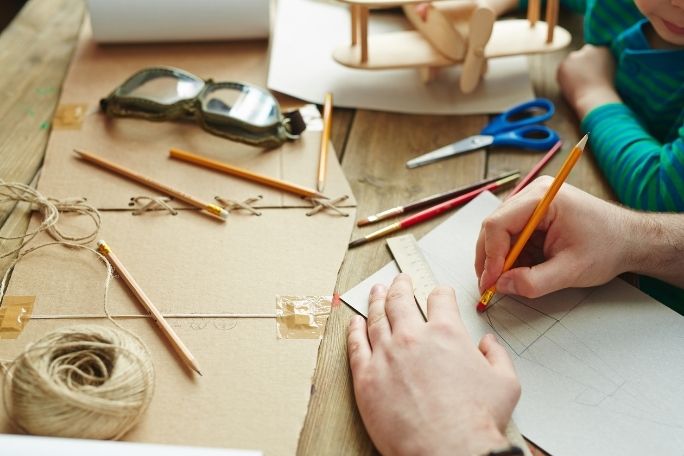Lesson summary
This is a STEAM lesson, which adds the Arts to STEM (Science, Technology, Engineering and Mathematics).
In this lesson, students will develop their understanding of forces by exploring push, pull, gravity and friction. They will then apply their understandings to create a complex system that performs a simple task, inspired by the works of Rube Goldberg. Students will identify the various forces at work within their systems and the origin of those forces.
Learning intentions:
Students will...
- apply knowledge of forces to create a Rube Goldberg-inspired machine.
Success criteria:
Students can...
- explain what a force is
- explain what motion is
- explain whether a movement has been caused by a push or pull
- identify when gravity is the force creating a movement
- identify the origin of forces in their Rube Goldberg-inspired design.
Lesson guides and printables
Lesson details
Curriculum mapping
We encourage you to teach STEAM both through and between disciplines (transdisciplinary).
This lesson could be used across multiple strands of the curriculum, including Science, Maths, and English. Consider focusing on a curriculum strand that will complement other areas of learning you and your students are working on.
Syllabus outcomes: ST2-7PW, ST2-13MW, EN2-1A, EN2-6B, MA2‑1WM, MA2‑2WM, MA2‑3WM, MA2-9MG, MA2-11MG, MA2-12MG, MA2-15MG, MA2-16MG.
General capabilities: Critical and creative thinking, Literacy, Personal and social capability.
Cross Curriculum Priorities: Sustainability.
Unit of work: STEAM Made Simple – Primary
Time required: 120 mins.
Resources required
- Device capable of displaying a video to the class
- Forces Handbook
- Make It Move Design Challenge (printed A3 or projected for the class to view)
- Portable device capable of filming
- Rube Goldberg Design Challenge Sheet (printed A3 or projected for the class to view)
- Table tennis balls (one per pair)
- Various construction and craft materials that students can use to create their Rube Goldberg machines (e.g. dominoes, icy pole sticks, balsa wood blocks, cardboard, string, sticky tape, blu-tac, car tracks, string, etc.)
Skills
This lesson is designed to build students’ competencies in the following skills:
- Collaboration
- Communication
- Creativity
- Critical thinking
- Problem solving
- Social skills
Additional info
STEAM Education:
Over recent years, the importance of STEM has been heavily promoted and discussed within fields of education. This has been within the context of ensuring that the next generation of students are provided with relevant knowledge and skills for the 21st century. STEM acknowledges the importance of the interrelated nature of science, technology, engineering and mathematics and the prominence of these skills in a world of continuous technological advancement.
What was missing from this original acronym, however, was an acknowledgement of the vital importance of artistic and creative thinking. The ability to think outside the box to develop artistic and creative solutions.
The relevance of art is integral to success in all of the original STEM areas, and so STEAM education is now moving to the forefront. Significant figures in science and technological advancement (notably Leonardo DaVinci, Albert Einstein and Steve Jobs) valued and applied the contribution of artistic skill into their work and art, design and creativity is also pivotal to success in industries such as marketing, advertising and promotion.
This is an original Cool+ lesson.


Welcome back!
Don't have an account yet?
Log in with:
By signing up to Cool.org you consent and agree to Cool's privacy policy to
store, manage and process your personal information. To read more, please see
our privacy policy here(Opens in new tab).
Create your free Cool.org account.
Many of our resources are free, with an option to upgrade to Cool+ for premium content.
Already have an account?
Sign up with:
By signing up to Cool.org you consent and agree to Cool's privacy policy to
store, manage and process your personal information. To read more, please see
our privacy policy here(Opens in new tab).